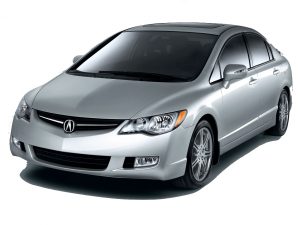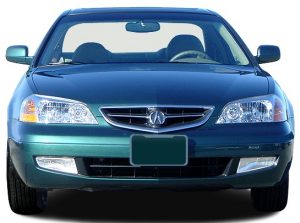
Complete digital official shop manual contains service, maintenance, and troubleshooting information for the Acura CSX 2006-2009. Diagnostic and repair procedures are covered in great detail to repair, maintain, rebuild, refurbish or restore your vehicle like a professional mechanic in local service/repair workshop. This cost-effective quality manual is 100% complete and intact as should be without any missing pages. It is the same factory shop manual used by dealers that guaranteed to be fully functional to save your precious time.
This manual for Acura CSX is divided into different sections. Each section covers a specific component or system and, in addition to the standard service procedures, includes disassembling, inspecting, and assembling instructions. A table of contents is placed at the beginning of each section. Pages are easily found by category, and each page is expandable for great detail. It is in the cross-platform PDF document format so that it works like a charm on all kinds of devices. You do not need to be skilled with a computer to use the manual.
MAKE: Acura
— — — — — — — — —
MODEL: CSX (CSX, CSX Touring, CSX Type-S)
— — — — — — — — —
YEAR: 2006, 2007, 2008, 2009
— — — — — — — — —
FORMAT: PDF (2,893 pages)
Buy the best manual on the Internet from responsible merchant and get instant download without surprise.
INSTANT Delivery: A download link will be sent to you instantly after payment. Simply click on the link and save it to your computer. You can use this Manual as long as you wish with no restrictions.
PRINTABLE with Diagrams: Just print the manual out and start to work. You can also use the manual with your laptop in your garage.
Customer SATISFACTION: If there is any problem, just drop a quick email. Within hours the issue shall be taken care of.
REFUND Policy: We sell high quality products only. In case there is any problem with your purchase, a replacement link will be sent to you. If we are at fault, you get 100% refund.
EXCERPT:
TABLE OF CONTENTS
Specifications
Maintenance
Engine Electrical
Fuel and Emissions
Transaxle
Steering
Body
Body Electrical
Restraints
Audio, Navigation, and Telematics
General Information
Engine Mechanical
Engine Cooling
Brakes (Including VSA)
Heating, Ventilation,
and Air Conditioning
Suspension (Including TPMS)
2006-2009 CSX – P/NO. 61SNR03
Chassis and Paint Codes
Each section includes:
1. A table of contents, or an exploded view index showing:
• Parts disassembly sequence.
• Bolt torques and thread sizes.
• Page references to descriptions in text.
2. Disassembly/assembly procedures and tools.
3. Inspection.
4. Testing/troubleshooting.
5. Repair.
6. Adjustments.
Automatic Transmission
System Description
The automatic transmission is a combination of a three-element torque converter and triple-shaft electronically controlled unit which provides five speeds forward and one in reverse. The entire unit is positioned in line with the engine.
The torque converter consists of a pump, turbine, and stator assembly in a single unit. The converter housing (pump) is connected to the engine crankshaft and turns as the engine turns. Around the outside of the torque converter is a ring gear which meshes with the starter drive gear when the engine is being started. The entire torque converter assembly serves as a flywheel while transmitting power to the transmission main-shaft. The transmission has three parallel shafts; the main-shaft, the countershaft, and the secondary shaft. The main-shaft is in line with the engine crankshaft, and includes the 4th and 5th clutches, and gears for 5th, 4th, reverse, and idler. The main-shaft reverse gear is integral with the main-shaft 4th gear. The countershaft includes the gears for 1st, 2nd, 3rd, 4th, 5th, reverse, park, and the final drive. The final drive gear is integral with the countershaft. The countershaft 4th gear and the countershaft reverse gear can be locked to the countershaft providing 4th or reverse gear, depending on which way the selector is moved. The secondary shaft includes the 1st, 2nd, and 3rd clutches, and gears for 1st, 2nd, 3rd, and idler. The idler gear shaft is located between the main-shaft and the secondary shaft, and the idler gear transmits power between the main-shaft and the secondary shaft. The gears on the main-shaft and the secondary shaft are inconstant mesh with those on the countershaft.When certain combinations of gears in the transmission are engaged by the clutches, power is transmitted through the main-shaft, then to the secondary shaft to the countershaft, or through the main-shaft to the countershaft to provide drive.
The electronic control system consists of the powertrain control module (PCM), sensors, and shift solenoid valves. Shifting and lock-up are electronically controlled for comfortable driving under all conditions. The PCM is located in the engine compartment.
Resetting Maintenance Information Display Resetting Individual Maintenance Items
Maintenance Minder
General Information (cont’d)
NOTE:
• The vehicle must be stopped to reset the display.
• If a required service is done and the display is not reset, or the maintenance display is reset without doing the service, the system will not show the proper maintenance timing. This can lead to serious mechanical problems because there will be no accurate record of when the required maintenance is needed.
• The engine oil life and the maintenance item(s) can be only reset independently with the HDS.
1. Turn the ignition switch to ON (II).
2. Push and release the SEL/RESET button repeatedly until the engine oil life indicator is displayed.
3. Press and hold the SEL/RESET button for about 10 seconds. The engine oil life indicator and the maintenance item code(s) will blink, then release the button.
NOTE: If you are resetting the display when the engine oil life is more than 15%, make sure the maintenance item(s) requiring service are done before resetting the display.
4. Press and hold the SEL/RESET button for another
5 seconds. The maintenance item code(s) will disappear, and the engine oil life will reset to ‘100’.
